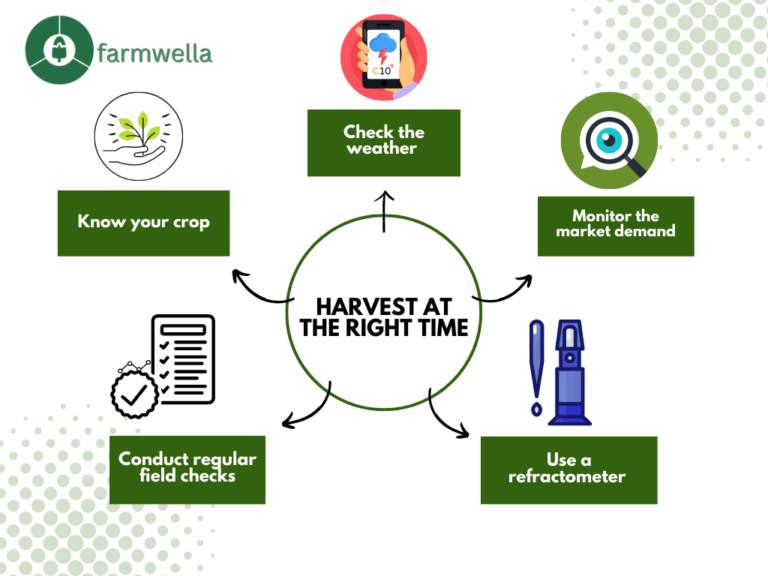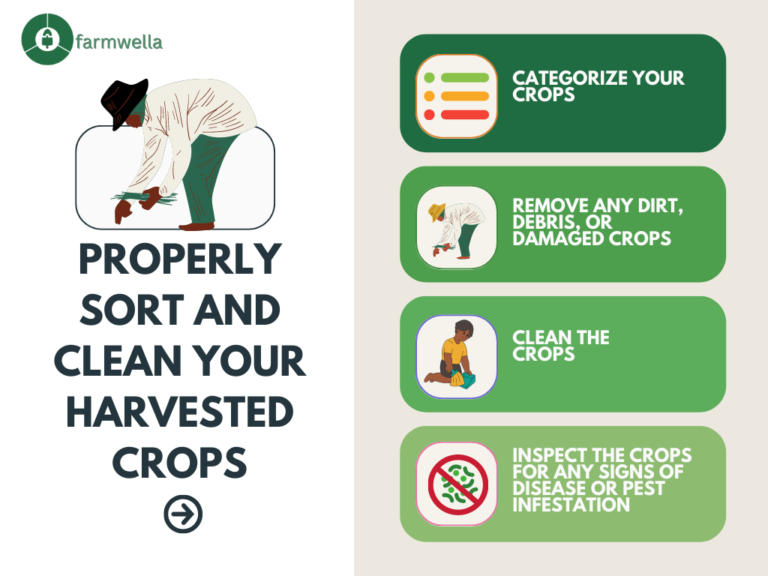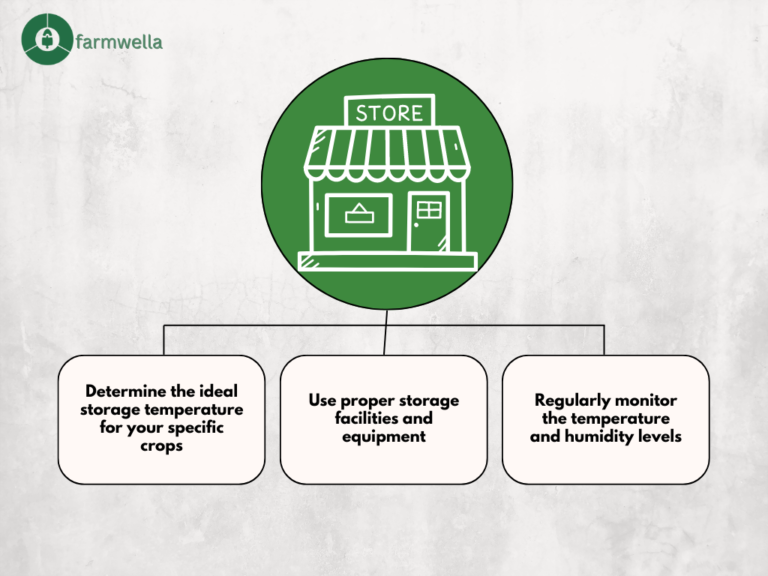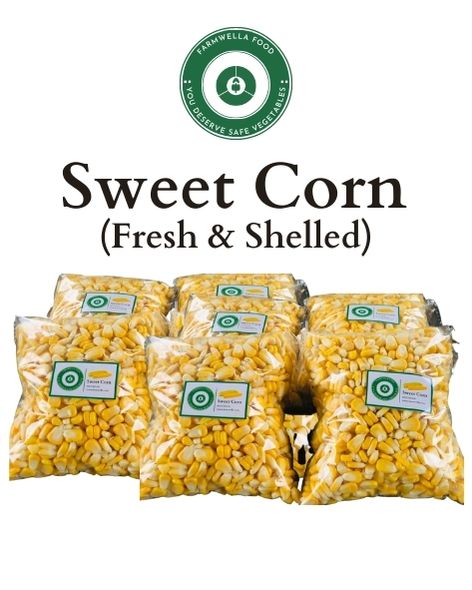Have you ever found yourself in a situation where you’ve put in all the hard work, from planting to harvesting, but still didn’t achieve the success you were hoping for? Well, there’s one important stage that you may have missed – post-harvest handling and processing.
I can hear you thinking, “Why is post-harvest handling and processing so important?” The answer is simple – it determines the quality and freshness of your crops. If you don’t handle them properly, they can spoil quickly, which can lead to losses and wasted resources.
Proper post-harvest handling and processing can help ensure that your crops remain fresh and of high quality, which can lead to better prices and longer shelf life. And let’s be real, who doesn’t want that, right?
So, let’s dive into some essential post-harvest activities that you can start incorporating into your farm operations.
1. Harvest at the right time
It may seem like a no-brainer, but believe it or not, harvesting at the wrong time can seriously affect the quality and shelf life of your crops.
Harvesting too early may seem like a good idea to get ahead of the game, but it can lead to smaller or unripe crops, which can mean lower yields and lower quality. And nobody wants that, right? On the flip side, harvesting too late can result in overripe crops, which can also shorten their shelf life.
So, what can you do to ensure you’re harvesting at the right time?
To figure out the right time for harvesting, here are a few things you should take into account.

- Know your crop
Each crop has its own maturity indicators, and it’s essential to be familiar with them. For instance, for tomatoes, shiny, firm skin, and red color are the maturity indicators. On the other hand, for corn, the best time to harvest is when the ears have plump, milky kernels.
- Check the weather
Weather conditions can have a significant impact on your crops’ ripening rate. Harvesting during the cooler hours of the day, like early morning or late evening, can help preserve the quality of the produce.
- Monitor the market demand
Harvesting at the right time can also be influenced by market demand. If you’re producing for a specific market, it’s essential to understand their needs and preferences. Some markets may prefer smaller or larger fruits, while others may prefer a certain level of ripeness.
- Use a refractometer
A refractometer is a simple tool that can measure the sugar content of your crops. It can help you determine the optimal time for harvesting fruits and vegetables, as it measures the sweetness level.
- Conduct regular field checks
Regular field checks can help you determine the best time for harvesting. Check your crops regularly to determine their maturity level and any signs of disease or insect infestation. Early detection of these issues can help you take necessary measures to prevent them from affecting your entire harvest.
2. Properly Sort and Clean Your Harvested Crops
Sorting and cleaning are two of the most important steps in post-harvest handling that every farmer should pay attention to. Not only do they ensure the quality and safety of the crops, but they also help increase their market value. Let’s take a closer look at the steps you can adopt to sort and clean crops properly.

- Categorize your crops
You should sort the crops into different categories based on their quality and size. For example, cassava can be sorted into grades A, B, and C based on its size, texture, and color. This helps buyers easily identify the quality they need and also ensures that the crops are sold at a fair price.
- Remove any dirt, debris, or damaged crops
It is important to use clean and sanitized equipment to remove dirt, debris, or damaged crops. For example, maize can be cleaned using a grain cleaner or a winnowing basket to remove any chaff, broken grains, or stones. Cleaning should be done carefully to avoid damaging crops, especially fruits, and vegetables with delicate skins.
- Clean the crops
This should be done as soon as possible after harvesting to prevent spoilage. For example, tomatoes should be sorted and cleaned within a few hours after harvesting to avoid bruising and decay. This can be done using a soft brush or by washing them gently in cold water.
- Inspect the crops for any signs of disease or pest infestation
This can help prevent the spread of diseases and pests to other crops and also ensure that the crops are safe for consumption. For example, yams can be inspected for any signs of rot or damage caused by yam beetles.
3. Cool and store the harvested crops
Let’s talk about the importance of cooling and storing crops at the right temperature. After all the hard work of sorting and cleaning your harvested crops, the last thing you want is for them to spoil due to improper storage. So, how can you ensure that your crops stay fresh and of high quality?

- Determine the ideal storage temperature for your specific crops
The first step is to determine the ideal storage temperature for your specific crops. This will depend on the type of crop and how it will be used. For example, tomatoes and peppers are best stored at temperatures between 50-55°F, while root vegetables like carrots and potatoes are best stored at temperatures just above freezing.
- Use proper storage facilities and equipment
Once you know the ideal temperature for your crops, make sure to use proper storage facilities and equipment to maintain the desired temperature and humidity levels. For small-scale farmers, this could mean using coolers, refrigerators, or even a simple storage shed with good ventilation.
- Regularly monitor the temperature and humidity levels
This is to ensure that they remain within the desired range. This can be done with the help of a thermometer and a hygrometer, which can measure the temperature and humidity of your storage area.
4. Properly package and label the product

Select a packaging material that is strong enough to protect your crops during transportation and storage. Consider the type of crop you are packaging and the distance it will travel. For example, delicate fruits and vegetables may require a softer packaging material to prevent bruising.
Provide proper ventilation and labeling on your packaging to maintain the quality and freshness of your crops during transportation and storage. Use quality labels that will withstand transportation and storage conditions, and make your brand stand out by using visual elements to create a memorable and recognizable brand.
5. Implement a quality management system

- Identify potential quality issues
Start by assessing your current post-harvest handling and processing practices to identify any potential quality issues that may arise. This could include factors such as poor sorting, inadequate cooling, or improper storage.
- Develop a QMS plan
Based on the potential quality issues you have identified, develop a plan for implementing a QMS. This plan should include processes for monitoring and controlling factors such as harvesting, sorting, cleaning, cooling, and storing. It should also include procedures for identifying and addressing any quality issues that arise.
- Train your team
Properly implementing a QMS requires everyone on your team to understand and follow the procedures. Be sure to provide adequate training to ensure that all team members understand their roles and responsibilities in the QMS.
- Monitor and evaluate
Regularly monitor and evaluate your QMS to ensure that it is effectively addressing potential quality issues and leading to improved yields and profitability. Use the feedback to make adjustments and improve your QMS over time.
In conclusion
It’s crucial to incorporate all these best practices into your farming operations, as they can have a significant impact on your productivity. By following these five best practices, you can contribute to a sustainable and efficient food supply chain while increasing your bottom line.
